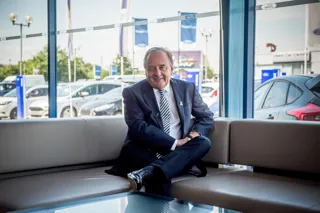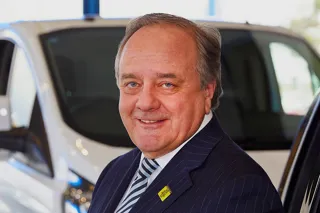The 107 is to be an entry-priced submini co-developed and built with Toyota, whereas the 1007 will be a sophisticated town car that's smaller than but no cheaper than a mid-to-high level 206. It will be shown at Paris in September, with a UK launch in spring 2005.
In fact the 1007 is almost exactly the Sesame show car that was seen at the 2002 Paris and Birmingham shows, minus the tailgate-mounted spare wheel and glass roof. Though priced against the supermini-MPVs such as Renault's new Modus, the Vauxhall Meriva and Fiat Idea, the 1007 will target different buyers. It's a strict four-seater and has just two doors.
But those doors are key to the 1007's appeal. They are rearward-sliding, electrically-powered and remotely-controlled from the key fob – a feature that adds to the showroom appeal of Peugeot's 807 MPV. In a city car, their usefulness is obvious as it makes the car so much easier to enter and exit, especially in narrow spaces.
Both rear seats are removable and foldable. It's reasonably spacious, being tall and sharing a wheelbase (and entire platform) with the Citroen C3.
The 1007 is 3.7m long – 10cm shorter than a 206 – and 1.6m tall. Peugeot says the Sesame will be available with up to 1.6-litre engines. The range is also believed to include 1.4 petrol and 1.4 HDi diesel. A clutchless manual transmission helps stop-start driving.
Many of the 1007's trim panels are exchangeable, so the cabin can be given a makeover by buying a set of trim panels from a dealer. So if the car has a loud cabin, it can be given a mainstream look to help resale, and soiled seat fabric can be quickly replaced.
The kits should offer a dealer accessory revenue opportunity, though Smart's experience might be salient. It offers swappable body panels in various colours, but owners tend to exchange among themselves via enthusiast websites rather than through dealers. The Peugeot 107 replaces the 106 and will launch in mid-to-late 2005. It is the fruit of PSA Peugeot-Citroen's tie-up with Toyota for a submini car which will have different styling for each marque.
Despite the similar names, the 107 and 1007 have completely different mechanical origins, as the 107's floorpan is specially developed for the Toyota-Citroen-Peugeot baby trio. The car will use 1.0-litre Toyota petrol and 1.4 PSA diesel engines.
















Login to comment
Comments
No comments have been made yet.